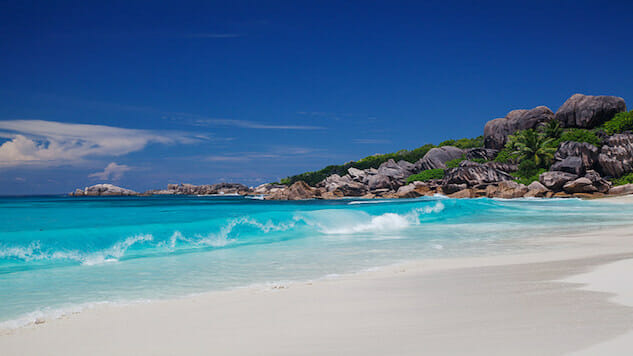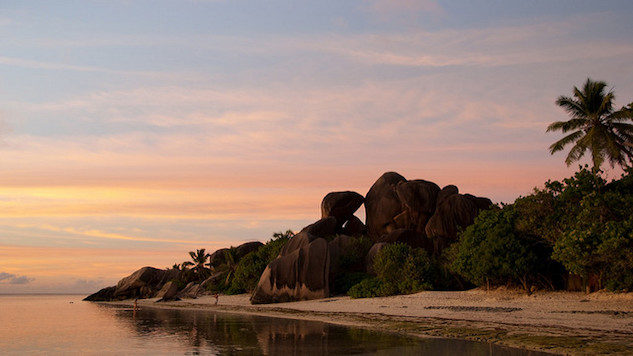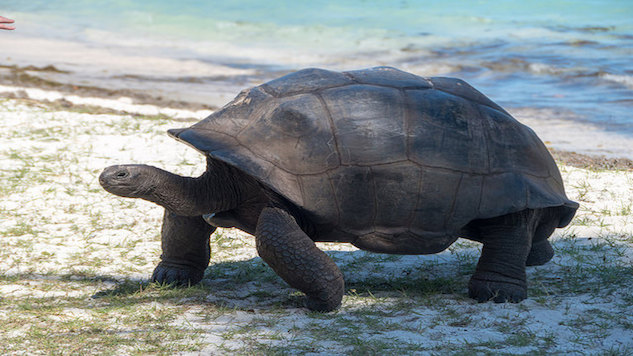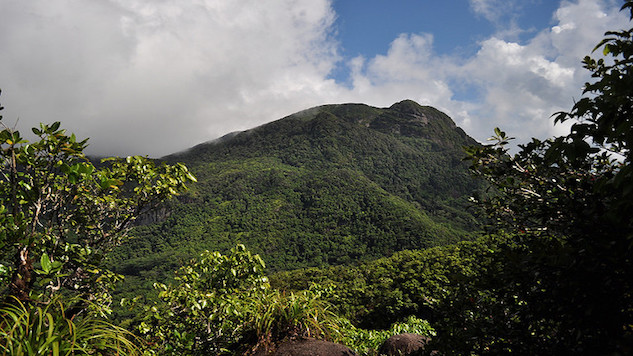
Never thought of visiting the Seychelles? Well, you might be soon. In our Breakout Role series, we take a look at places that have seen huge increases in tourism in the last few years, and try to figure out what’s causing all the hype.
By any measure, Seychelles is a relatively tiny country. The African nation, made up of 115 small islands bunched together in the western Indian Ocean, has a population of around 90,000 people and a total landmass that is only about 2.5 times larger than Washington, D.C.
But if there’s one thing in Seychelles that’s enormous, it’s tourism. In its 2014 report, the World Travel & Tourism Council estimated that almost 57 percent of the country’s yearly GDP had either directly or indirectly come from travel. The country has been so successful in expanding its hospitality industry that its former minister of tourism, a man named Alain St. Ange, is now running—with a great deal of support—to become the next General Secretary of the United Nations’ World Tourism Association.
And things aren’t slowing down in Seychelles either. In 2015 the island nation had the world’s 12th largest growth in international visitors, and in 2016 alone the country saw a 10 percent increase in total arrivals.
![]()
Lights
 Photo: Didier Baertschiger, CC-BY
Photo: Didier Baertschiger, CC-BY
Turning an isolated archipelago into a tourism success story isn’t done over night, and in Seychelles this process has been ongoing for decades. David Germain, Seychelles’ director of tourism for Africa and the Americas, says that when the country started to really frame itself as a travel destination—around 35 or 40 years ago by his estimation—one of the first goals was to include the entire population, and to educate them as to the benefits the industry could bring their nation.
“I think we took the right step in getting the population involved in tourism right at the beginning,” Germain says. “The kids grow up understanding tourism.”
A look at the country’s yearly climate statistics may lead to the conclusion that its smooth, clear-blue beaches were always destined to become a tourism hub. The weather is incredibly consistent, with average daily temperatures hovering in the mid-to-low 80s all year long. Additionally, the nation’s lack of any sort of visa requirement for entry makes travel from any country—for any period of time—extremely accessible.
Over time, Seychelles began to emerge as a popular vacation spot for Europeans, but things changed in the 1990s when a rise in global tourism made some travelers a little more skeptical of taking such a long flight to the islands. According to Germain, it was after this period that the country began to look to new source markets, such as the Americas, Russia and other parts of Asia, for new visitors.
![]()
Camera
 Photo: So Seychelles, CC-BY
Photo: So Seychelles, CC-BY
In addition to minding the concerns of the locals, there is another factor that has always been an instrumental part of Seychelles’ tourism growth—the environment. And the country has done so in grandiose fashion: in an attempt to protect its natural beauty from overdevelopment, the government has protected around 50 percent of the nation’s land and water territory as nature preserves.
This battle is natural ongoing, because as more and more tourists come to Seychelles for vacation, the higher the demand for increased land development gets. However, the battle—so far, at least—is being won by the environment, with the country seemingly remaining steadfast in its commitment to conservation.
“There are things that we can do, and things that we’re not allowed to do to remain this niche destination that we are, Germain says. “We are not a mass destination. We will never be—because of our conservation program.”
![]()
Action
 Photo: Jean Pierre Bovin, CC-BY
Photo: Jean Pierre Bovin, CC-BY
After one look at the country’s scenery, it’s clear why these landscapes are so worth preserving. Flat-sanded, palm-filled beaches are available around every turn in Seychelles, with Mahe—the country’s largest and by far most populous island—leading the way. The main island is a popular resort destination, with beaches such as Baie Lazare and Beau Vallon standing out as elite relaxation spots.
Tourists looking for more adventurous attractions don’t have to leave Mahe either. More than 20 percent of the island is taken up by Morne Seychellois National Park hiking trails, beautiful peaks and some rewarding, isolated beaches for those willing to travel deep enough into the park. Additionally, the Ste Anne National Marine Park, which is located just off the coast of Mahe, offers a five star resort as well as mangrove and crocodile sightseeing opportunities.
For those wanting to explore a little further, the tiny island of Praslin—not even 15 square miles in total size—is home to the Vallee de Mai Nature Reserve. An established UNESCO World Heritage Site, the area is home to an almost untouched prehistoric forest, as well as a number of unusual plants and animals.
When You Go
Flight Rates: Current round trip flights from Los Angeles to Seychelles International Airport cost between $1,200 and $1,950, while flights from New York can be found for between $1,170 and $1,720.
Travel Concerns: The U.S. Department of State has no significant safety warnings for Seychelles, and there are no visas required for visitors.
Currency Exchange: 1 USD = 13.51 Seychelles Rupees
More Info: Lonely Planet has a fantastic Seychelles travel guide, and the tourism board’s website offers information about travel, attractions and upcoming events.
Top photo: Jean-Marie Hullot, CC-BY
Dillon Thompson is University of Georgia student and freelance writer with a love for travel and an addiction to coffee and hip-hop music.